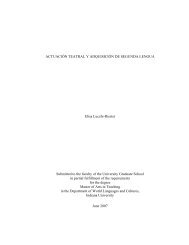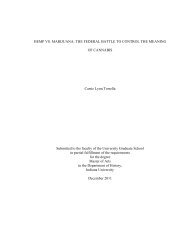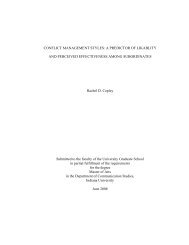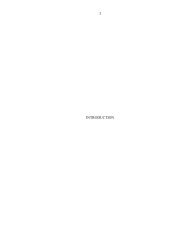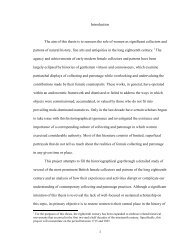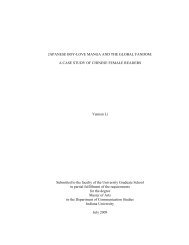Amir Saad Thesis final revision 03x - IUPUI
Amir Saad Thesis final revision 03x - IUPUI
Amir Saad Thesis final revision 03x - IUPUI
Create successful ePaper yourself
Turn your PDF publications into a flip-book with our unique Google optimized e-Paper software.
PURPOSE OF THIS INVESTIGATION<br />
18<br />
This investigation was undertaken to gain more information on composite<br />
resin core behavior combined with glass fiber posts and Panavia 21 for crown<br />
cementation (under cyclic loading). It is hypothesized that a glass fiber post combined<br />
with a composite resin core and Panavia 21 for crown cementation would resist<br />
marginal gap opening as good as or better than the other groups. This hypothesis is<br />
based on the similarity of the elastic modulus of glass fiber posts to natural tooth<br />
dentin 7, 87-92 combined with the adhesive effect of Panavia 21 to tooth structure,<br />
silanated composite resin, and tin plated silver palladium alloy. Although it is known<br />
that composite resin has a much lower elastic modulus than cast alloys 161 that would<br />
tend to deform at lower cyclic stresses, the bonding system used in this glass fiber<br />
group tested with Panavia 21 should eliminate marginal gap opening at the lingual<br />
surface of bucally loaded, prepared teeth.<br />
Another hypothesis being tested is that cast post and cores would demonstrate<br />
higher load-to-failure values than the other groups tested. It is believed that the<br />
strength of the casted silver palladium alloy with a good adaption of the post to the<br />
canal space would render higher values of fracture resistance than the other groups.<br />
Although this type of testing has been done before, 93 various parameters such as<br />
ferrule length, root length, and cement used are different from other studies.



